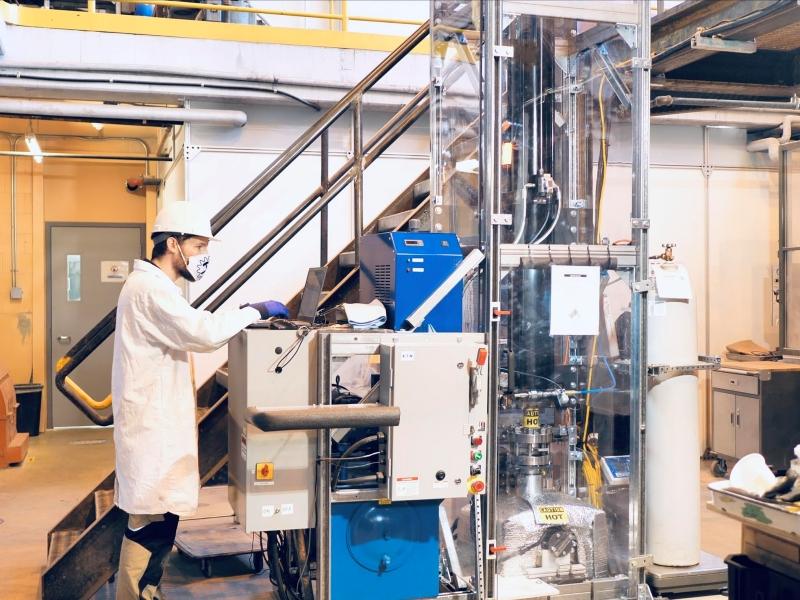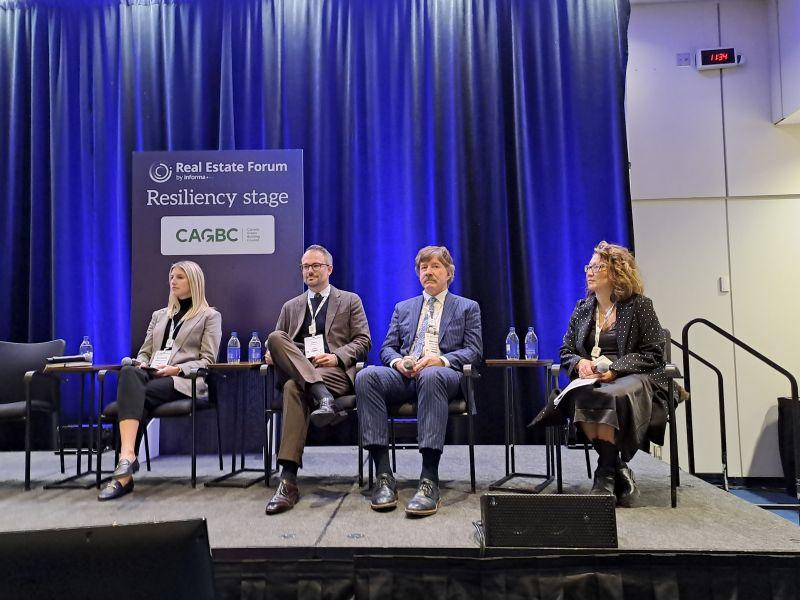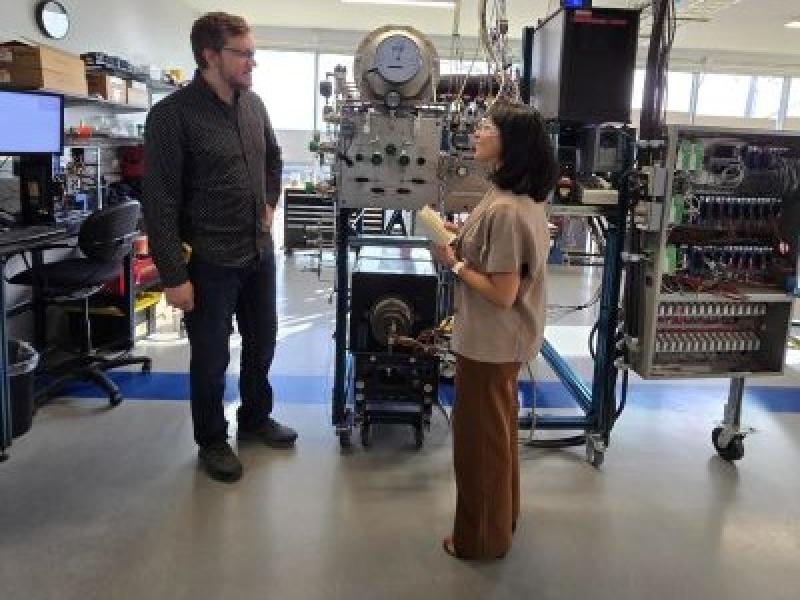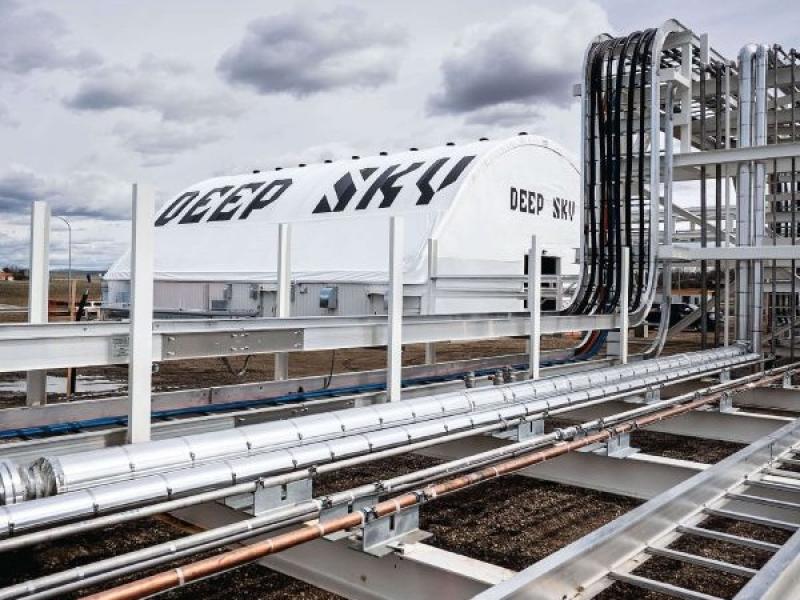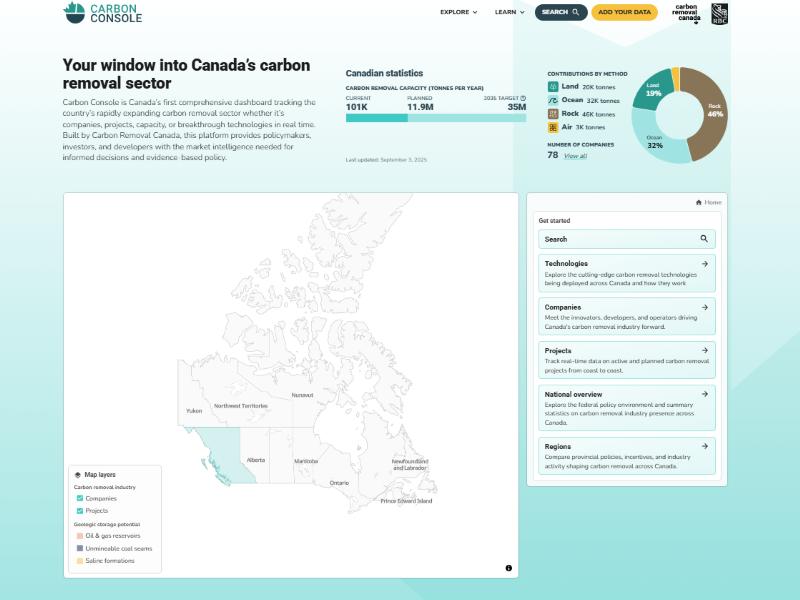
Deep Sky has unveiled plans for a $500-million carbon removal site in southwest Manitoba that will be one of the world’s largest upon completion, capable of drawing down large quantities of the greenhouse gas.
At full scale, the Montreal-based company expects it will be able to remove 500,000 tonnes of carbon per year from the atmosphere. The project will be built in phases, starting with 30,000 tonnes of removal capacity. Deep Sky plans to start operating the facility in 2026.
Deep Sky said the location offers advantages such as the ideal geology for storing carbon dioxide (CO2) underground, a favourable regulatory environment, a skilled workforce, and Manitoba’s hydroelectricity-powered grid.
"What Deep Sky is building in Manitoba isn't just one of the world's largest carbon removal facilities, it's the foundation of an industry that will reshape our economy and our planet,” Alex Petre, CEO of Deep Sky, said in the Thursday morning announcement.
Canada, she added, “has the opportunity to become the carbon removal capital of the world.”
Deep Sky Manitoba
Deep Sky is evaluating potential sites for the facility and has begun engaging with stakeholders in the region. The company said collaboration with Indigenous groups and local communities will be key to securing support for its project.
Deep Sky says it has secured the support of the Dakota Grand Council by working with the Dakota Nations of Manitoba. The organizations have signed a declaration of relationship to explore investment and other opportunities.
Final site selection for the Manitoba facility is anticipated to take place over the fall, which will enable the drilling of the carbon storage well by the end of 2025 and construction to start in 2026.
The 30,000-tonne phase is projected to attract over $200 million in investment.
The commercial-scale facility in Manitoba would represent a major step-up for the company’s current capacity. Earlier this year, Deep Sky opened its Alpha site in Innisfail, Alta., where up to 3,000 tonnes of CO2 is expected to be removed per year by using a variety of direct air capture (DAC) technologies.
It is also engineered to generate carbon removal credits, supporting a business model whereby companies will pay Deep Sky to remove CO2 from the environment and store it away safely. Microsoft and RBC have already pre-purchased such credits.
Petre aims to have Deep Sky operate 100 sites in Canada that have the capacity of the Manitoba facility.
Canada and carbon removal
Canada has the potential to be a leader in the carbon removal sector, according to non-profit Carbon Removal Canada. Its research has found the industry could generate $143 billion in economic activity for Canada by 2050.
Canada’s welcoming environment for carbon removal has led U.S.-based startup CarbonCapture Inc. to Alberta, where it is developing a small site in the province it expects to operate by the end of October.
Carbon Engineering, a Squamish, B.C.-based company, is another of Canada’s leaders in the field. Like Deep Sky, it announced plans for a carbon removal project that could draw down 500,000 tonnes of CO2 per year. The company’s Stratos project is in development in the Permian Basin of Texas.
Today, Canada has approximately 3,000 tonnes of carbon removal capacity from the atmosphere, according to Carbon Removal Canada’s website that tracks the sector.
There are three operating DAC sites around the world that capture at least 1,000 tonnes of CO2 per year, the International Energy Agency says. One of those is Climeworks’ Orca facility in Iceland which has the capacity of up to 4,000 tonnes per year.
DAC has attracted significant interest as a way to reverse industrial carbon emissions in order to tackle climate change. However, it is an expensive and relatively untested technology that has not always met expectations.
In an August interview with Sustainable Biz Canada, Petre said such obstacles can be overcome, similar to the way the electric vehicle industry was scaled up.


